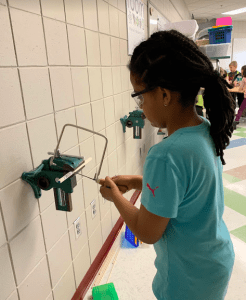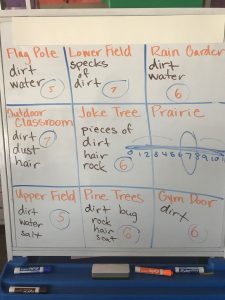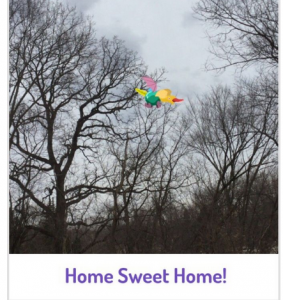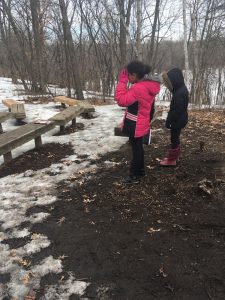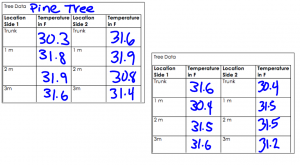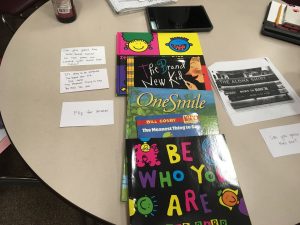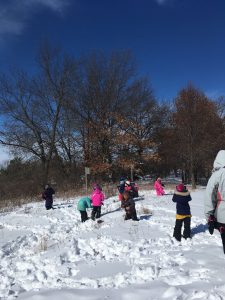Knowing and Not Knowing Again
A friend on twitter reminded me that there is beauty in the space between knowing and not knowing. I’ve been thinking about that a lot since his reminder. As much as I try to embrace the ‘yes, and’ mindset, I find myself trying to sneak in a ‘yes, but’. What I’m realizing is that it comes down to control – maybe power?- and who has it.
The first time I used @Ed_by_design’s quote was doing design challenges with students and I don’t know how things were going to turn out or if they would turn out. There was anxiety and uncertainty. For me, this is the ‘fun’ kind of anxiety. The direction things take is in the hands of the students. But, I could argue that I am in control as I direct/guide/assist them towards their goal with hints, tricks, resources, tips and helpful group members. I still have control when I see things going south to put on the brakes and re-group.
When I decided I needed a change in my career and took a leap of faith, I didn’t know how things were going to turn out. There was more anxiety here. It’s still a bit of the good kind though as I tend to welcome change and thrive on challenges. As I have learned, some changes don’t turn out as expected, but still provide a chance to learn. Recovery can happen and I am lucky enough to be in a district where other options exist. While the timeline is quite different from a classroom challenge, the control of living in or removing myself from the situation was mine.
Currently, I am in this waiting game to find out how the ‘20-’21 school year will look and I have no control at all. The governor is due to decide July 30th. This is a very different version of living between knowing and not knowing and I’m not such a fan. At times, I have an internal monologue that includes: ‘There is nothing to worry about until there is something to worry about; enjoy the time while you have it’. But then I see tweets like: “you’ve had 3 months to prepare for distance learning, what have you done?” When I share my concern with colleagues, I’m told not to worry, we’ll work as a team and get it figured out. And I can’t help but think ‘Yes, but…’; and ‘What if…’ Right now, I’m not seeing beauty in this space. This alone has given me a lot to think about. If I only embrace ambiguity when I have control, does that really count?
This uncertainty and uncomfortable feeling of lack of control has also given me pause and time to reflect on my practice. How many times do my students feel like this? Do I really give up control enough as a teacher so they feel as if they have control over their situation? How am I building the capacity for students to be comfortable with the anxiety and can see it as the ‘fun kind’? Do I create a sense (even unintentional) that they have no control?
Garreth also shared a great article by Margaret Wheatly with some great reminders for me. Multiple lines jumped out at me: “I find that the first step to becoming curious is to admit that I’m not succeeding in figuring things out alone.” I was reminded of this all too clearly this past year as I endeavored to change a decades old system. This was in stark contrast to the past years where everything was done in collaboration. It was easy to forget that the changes in curriculum and methods created in the past did not happen overnight but evolved through constant conversations and trust which had been built.
I think the part that really grabbed my heart though was: “We can’t be creative if we refuse to be confused. Change always starts with confusion; cherished interpretations must dissolve to make way for the new. Of course it’s scary to give up what we know, but the abyss is where newness lives. Yet if we move through the fear and enter the abyss, we rediscover we’re creative.” There is a certain level of newness as I return to my roots of middle school science instruction after a 13 year break. I can trust and believe in myself and that I will create a way forward for my students no matter what the format. I know I will not succeed alone and have colleagues that will work through challenges with me.
I also have to remember that this quote was not written during a pandemic. Moving ‘through the fear and enter(ing) the abyss’ has a whole new meaning as I wait for a distant lawmaker to decide what is safe for me and my students and what school will or won’t look like. I’m trying to be optimistic that we can be creative with constraints, yet I just keep feeling like time is ticking away from us.


